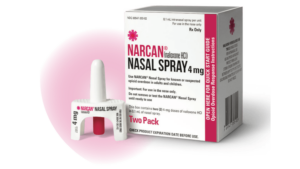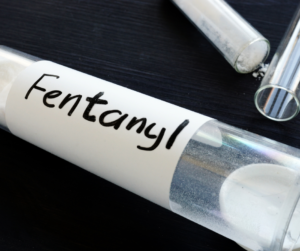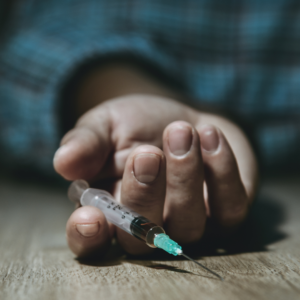Overdose deaths continue to skyrocket in the United States. According to the National Center for Health Statistics, overdose deaths reached 93,331 in 2020 which is the highest number ever recorded. While these numbers continue to climb, it is important to remember that every ‘number’ is someone’s son,  daughter, mother, father, friend, or family member.
daughter, mother, father, friend, or family member.
A large majority of overdose deaths today involve the synthetic opioid fentanyl which is 50 times more potent than heroin and 100 times stronger than morphine. Just two milligrams of fentanyl, which is equal to 10-15 grains of salt, is a lethal dose. According to the DEA, without laboratory testing, there is no way to know how much fentanyl is in a pill or powder. This is why it is more important than ever to be proactive. Below are some ways to reduce overdose deaths:
Distribution of Narcan
Narcan is an opioid antagonist. When administered it can reverse the effects of an overdose. Equipping and training individuals who use drugs, or are more likely to witness an overdose is essential. It has been estimated that “80% of overdose reversals with Narcan in the United States were carried out by individuals who also use the drugs… 90% of overdose reversals were carried out by bystanders who also use the drugs” (CDC, 2022).  Family members of individuals who use opioids should also have Narcan available. This is particularly important in rural areas where response times are slower. We distribute Narcan at The Life Change Center and you can contact us for more information.
Family members of individuals who use opioids should also have Narcan available. This is particularly important in rural areas where response times are slower. We distribute Narcan at The Life Change Center and you can contact us for more information.
Support Medication-Assisted Treatment (MAT)
Medication-Assisted Treatment has been proven to reduce opioid overdose.  Drugs like methadone, which we administer here at the Life Change Center, activate opioid receptors in the brain. In addition, these medications reduce painful withdrawal symptoms without causing euphoria. Reduced cravings and withdrawal symptoms allow individuals to make lifestyle changes that support their recovery like getting a job and going to counseling. Medication works best when it is combined with counseling and family programs along with social support and safe prescription management which we also provide as part of our recovery services.
Drugs like methadone, which we administer here at the Life Change Center, activate opioid receptors in the brain. In addition, these medications reduce painful withdrawal symptoms without causing euphoria. Reduced cravings and withdrawal symptoms allow individuals to make lifestyle changes that support their recovery like getting a job and going to counseling. Medication works best when it is combined with counseling and family programs along with social support and safe prescription management which we also provide as part of our recovery services.
Screening for Fentanyl
Because fentanyl is cheap, small, and potent, it is making its way into other drugs (intentionally and unintentionally), often times without the user’s knowledce. This is also increasing overdose deaths. For this reason, fentanyl testing should be included in drug screening panels in all hospitols, clinics, and treatment centers to check for cross contamination. Here are some even more recent statistics from thre DEA:

“Fentanyl remains the deadliest drug threat facing this country. According to the CDC, 107,622 Americans died of drug overdoses in 2021, with 66 percent of those deaths related to synthetic opioids like fentanyl. Drug poisonings are the leading killer of Americans between the ages of 18 and 45. Fentanyl available in the United States is primarily supplied by two criminal drug networks, the Sinaloa Cartel and the Jalisco New Generation Cartel- CJNG” (DEA, 2022).
Reducing stigma
Addiction is a progressive disease. It is a chronic illness that only gets worse if it is not treated. It is not a moral failing. In addition, many people that struggle with addiction have experienced past trauma or have a co-occurring mental health disorder like depression, bipolar, or anxiety.  People struggling with an addiction deserve dignity, respect, empathy and understanding just like anyone else with a chronic illness. The way we speak about addiction matters. Click here to take the “words matter” pledge from Hopkins Medicine. The stigma surrounding addiction keeps many people out of treatment, and it can hold them back from receiving the care they need.
People struggling with an addiction deserve dignity, respect, empathy and understanding just like anyone else with a chronic illness. The way we speak about addiction matters. Click here to take the “words matter” pledge from Hopkins Medicine. The stigma surrounding addiction keeps many people out of treatment, and it can hold them back from receiving the care they need.
Understanding how medication and treatment work is also an important part of reducing the stigma. Medication-Assisted Treatment is a proven way to save lives. Unfortunately, most people in the United States do not receive proper treatment, or any treatment at all. This is why education about Medication-Assisted Treatment, counseling, family programs; and spreading the word about their effectiveness can help reduce stigma.
Reducing stigma saves lives.
At The Life Change Center we are passionate about reduding overdose deaths and equipping people to save lives. Below are some overdose symptoms and what to do in a situation where an overdose occurs.
Overdose Symptoms:
- Unconsciousness or inability to awaken.
- Slow or shallow breathing or breathing difficulties such as choking sounds or a gurgling/snoring noise from a person who cannot be awakened.
- Fingernails or lips turning blue/purple.
What it do in an Overdose Situation
If an opioid overdose is suspected, stimulate the person: Call the person’s name. If this does not work, vigorously grind knuckles into the sternum (the breastbone in middle of chest) or rub knuckles on the person’s upper lip. If the person responds, assess whether he or she can maintain responsiveness and breathing.
Continue to monitor the person, including breathing and alertness, and try to keep the person awake and alert. If the person does not respond, call 911, provide rescue breathing if they are not breathing on their own, and administer one dose of naloxone.
STEP 2: CALL 911 FOR HELP AN OPIOID OVERDOSE NEEDS IMMEDIATE MEDICAL ATTENTION.
An essential step is to get someone with medical expertise to see the person as soon as possible. If no emergency medical services (EMS) or other trained personnel is on the scene, call 911 immediately.
All you have to say is “Someone is unresponsive and not breathing.” Be sure to give a specific address and/or description of your location and follow any directives the dispatcher may provide.
References
DEA warns of brightly-colored fentanyl used to target young Americans. (2022, August 30). DEA. https://www.dea.gov/press-releases/2022/08/30/dea-warns-brightly-colored-fentanyl-used-target-young-americans?fbclid=IwAR0KPt9FsZt3QRANbaqdZYXqqpmNZJ5BaK0HjrG8-FHatfAhFvYlnrYdzj8
Evidence-based strategies for preventing opioid overdose: What’s working in the United States. (2022, June 9). Centers for Disease Control and Prevention. https://www.cdc.gov/drugoverdose/featured-topics/evidence-based-strategies.html
Matsos, S. (2022, April 28). Stigma of addiction | Johns Hopkins Medicine. Johns Hopkins Medicine, based in Baltimore, Maryland. https://www.hopkinsmedicine.org/stigma-of-addiction/
Overdose prevention strategy. (2021, November 10). Overdose Prevention Strategy. https://www.hhs.gov/overdose-prevention/
